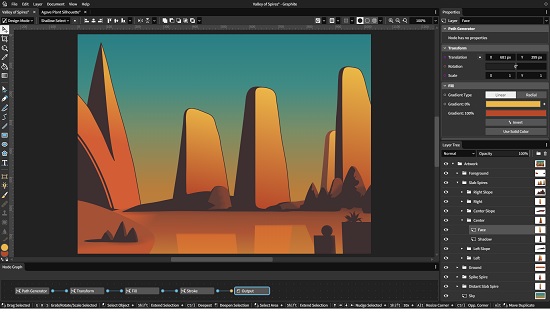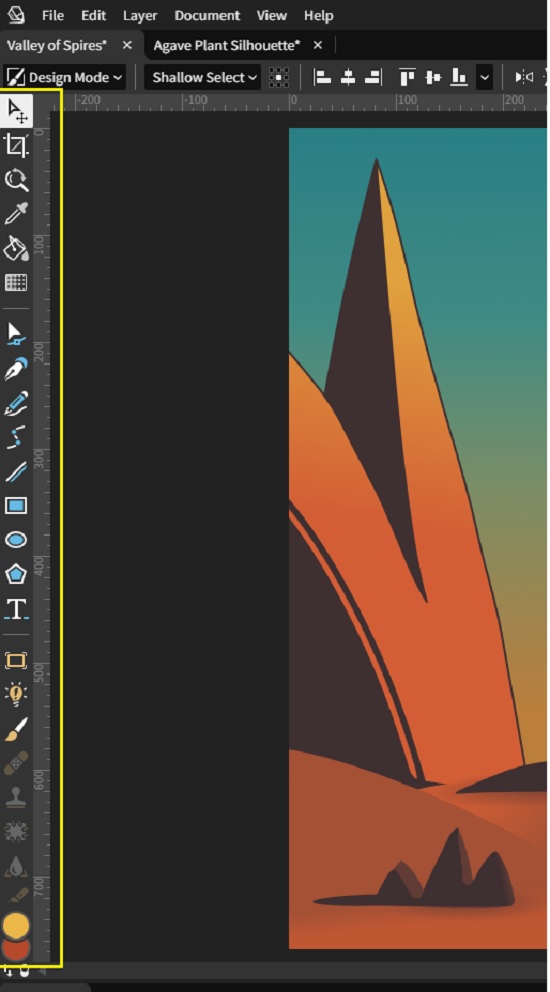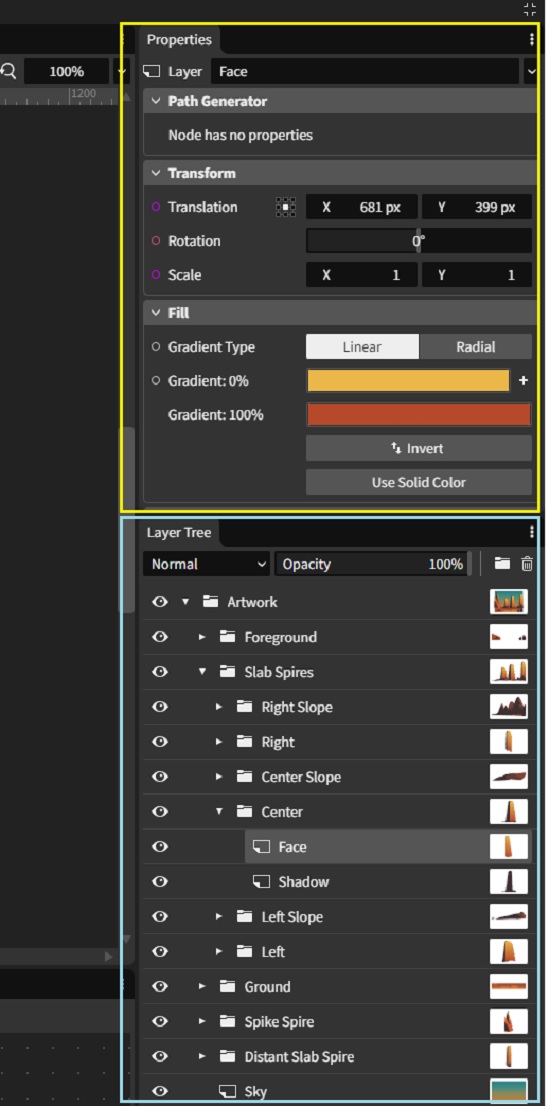Graphite is a free open source graphic editor. This tool can be used for various functions like graphic design, photo editing, illustration, etc. The tool is quite professional to edit vector 2D images. It is available for free under an open-source license and can be used directly through a web browser. It has been coded on Rust – a modern programming language especially used for creating fast and reliable applications. There are plans to launch native clients on Windows, Mac and Linux in the near future along with other features like real time collaborative editing and more.
Vector design is based on curves instead of pixels that allows you to preserve its quality at any scale. The raster paintbrushes of Graphite, its generators and other tools also work likewise. The application render engine allows you to zoom indefinitely and export the artwork at any size.
Graphite is powered by a node graph composting engine which offers a non-destructive editing experience. This node-based approach unleashes an ecosystem with powerful capabilities for casual as well as professional designers. The architecture supports the use of distributed computation to cover up for the deficiencies in the power of local computing.
Graphite boasts of an easy-to-use and intuitive interface that is simple to learn and deliver. Its node-based compositor that is still under development enables you to apply image effects and create impressive art with the help of AI.
Interface:

1. The key tools for creating and editing the images are combined in a toolbar towards the left of the interface. This toolbar houses the tools such as Select, Artboard, Fill, Eyedropper etc. The main drawing tools such as Path, Pen, Freehand, Line, Spline, Shape and many more are also located on the lower side of the toolbar along with the foreground and background color tool.

2. The Panel towards the right of the interface has two components – Image properties and Layers. The Image properties section can be used to modify the X-Y location, Dimensions, Background, Scale, Rotation and more. The Layers section is used to choose different layers, switch them on / off as well as to adjust their opacity, lighting, contrast etc.

3. Graphite boasts of several hot-key combinations that can greatly help you to speed up your work. The hot-keys are listed at the bottom of the interface. To view the entire range of hotkeys, click on the ‘Fullscreen’ icon at the top right of the window.
A number of other sections and features are available in the Graphite interface but cannot be tried out as they have not been implemented so far.
Closing Comments:
Overall, Graphite is a fine digital content creation platform for 2D graphics editing, vector art, digital painting, illustration and more. Powered by a node graph engine, it provides for a non-destructive editing experience with powerful capabilities for novices as well as professionals.
Since it is a work in motion, several new features and enhancements are expected in the future. Go ahead and have a go at it and do write what you feel about it.
Click here to navigate to Graphite.